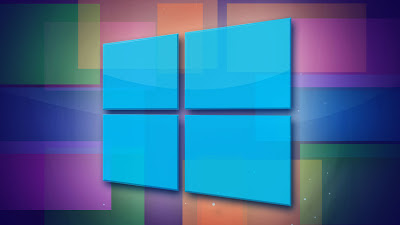Windows 8 is here, and it represents a radical departure from Microsoft's previous operating systems. The entire system has been designed from the ground up, and is this time geared towards users of mobile devices like tablets and smartphones. The new interface features big, colourful buttons presented in a touchscreen-friendly format, and many of the main functions can be carried out via swiping or tapping the screen, so long as you have a laptop with a touchscreen.
Laptop users may worry that because of Windows 8's new focus, its functionality on notebooks and desktop PCs may have been sacrificed. Thankfully, however, this is not the case; indeed, it can be argued that Windows 8 actually works better on laptops than on mobile devices. Here are 5 reasons why.
1. It
makes the most of your laptop's hardware
Ever since the resource-hungry Windows Vista, Microsoft have been working hard to make their operating systems more efficient. Windows 7 was a big step forward in this regard, and Windows 8 continues this trend, using significantly less memory than Windows 7. The upshot of this increased resource optimisation is greater responsiveness and faster boot times. In other words, even people upgrading to Windows 8 on a previous-gen laptop will benefit from increased speeds, and new laptops with Windows 8 pre-installed will be among the fastest on the market.
2. It
offers even more functionality than on tablets
Windows 8 was designed as an 'everywhere' operating system, meaning that whether you're using a tablet, laptop or other device, you'll get the same basic experience using it. The laptop version of Windows 8 is extremely versatile, thanks to the presence of a more traditional Windows 7-style desktop interface that allows users to perform tasks in a way that is more familiar. As well as this, the new tablet-style start screen successfully manages to translate touch controls to a mouse/keyboard input – for example, using the mouse wheel to scroll instead of swiping. It may take a little bit of getting used to, but using Windows 8 on a laptop is just as easy, if not easier, than on a mobile device.
3. Security
Because of the greater degree of control users have over every aspect of their system, the need for comprehensive security features is paramount on laptops. Microsoft have realised this, and Windows 8 offers a variety of safeguards on laptops, including the standard Windows Defender software which protects against basic threats, as well as a System Reset feature which allows you to set your laptop back to factory condition. This means that if you sell your laptop on, you know that your data will be safe.
4. Shortcuts
galore
Laptop users have a wealth of keyboard shortcuts literally at their fingertips, and Microsoft have taken full advantage of this fact with their latest operating system. The keyboard has been re-purposed to provide a quick, intuitive user experience. If you want to search for anything from the start screen, just start typing and the results will come up immediately. Other shortcuts like using Alt+Tab to switch between apps quickly make for a seamless experience using your keyboard. Combine this with the various touchpad/mouse shortcuts (such as hovering the cursor over the left hand side of the screen to choose the app you want to bring to the front) and you've got a user interface that is just as easy to use as any touchscreen.
5. Many
Windows 8 laptops also work as tablets anyway
If you absolutely have to have a touchscreen interface, there are solutions available. The best laptop for someone who wants the functionality of a PC combined with the portability of a tablet would be a hybrid such as the Lenovo Ideapad Yoga. The Yoga and other laptops like it feature either folding or sliding designs, allowing the device to be converted to a tablet whenever you need to. For somebody who wants the best of both worlds, a Windows 8 laptop/tablet hybrid offers everything you could want.
Image courtesy: LifeHacker.com
